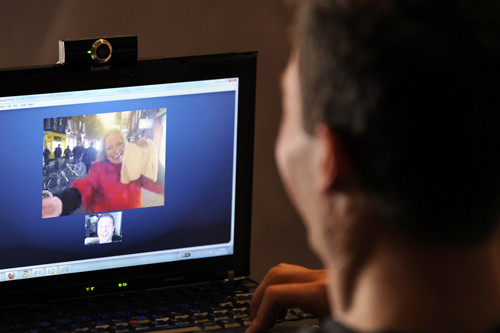Thursday 29th August marked the 10 year anniversary of Skype, the worldwide provider of free online voice and video calls. Today, Skype has more than 300 million users every month and 8 billion hours of calls are made each year. For anyone with loved ones abroad, it is hard to imagine life without this service as so many value the ability to regularly keep in touch with family and friends around the world.
Skype has always prided itself on being a consumer centric brand which places user experience as its number one priority. This is proven by the fact that up until recently, Skype offered very limited, if any, marketing opportunities for brands to reach out and communicate with its users.
It is interesting therefore to compare Skype to other digital platforms such as Facebook, which at only one year younger, has evolved and established itself as a potential marketing channel.
However, since being bought by Microsoft in 2011, Skype has begun to show signs of shifting its focus, in order to cash-in on its extensive user database, whilst nevertheless trying to maintain its user-first philosophy. Thus, in 2012 Skype introduced ‘Conversation Ads’, to be shown during non-paying user’s one-to-one audio calls.
However, at the risk of being seen as invading their personal phone calls, these ads have instead been pitched as conversation starters, sparking discussions between consumers about the brands they care about.
Additionally, in the summer of 2013, Skype have confirmed their plans to incorporate interactive display and video ads, aimed to ‘turn calls into a more social and relevant branded experience’. For example, Skype envisage a car configuration tool for their platform, in which users can play with, customise and talk about their car during a call with a friend.
Only time will tell whether these ventures are received as welcome talking points or whether they are a turn-off to Skype users. That said, whilst it may be a challenge for Skype to carve out its role within the marketing world, perhaps an opportunity is being missed in the more niche realm of market research?
Skype is already commonly used in business for interviewing potential employees but, despite being 10 years old, it seems few research agencies are taking advantage of the benefits this platform offers. Whilst face-to-face interviews will always be preferred, as both client budgets and deadlines tighten, it is not always feasible to fly to each fieldwork location and conduct research in person. Skype therefore presents the opportunity to carry out interviews abroad at a minimal cost and video calling allows you to gauge emotions and still build an interviewer-respondent rapport. Plus, nearly 50% of users connect to Skype through their mobile, allowing these respondents to give you an insight into their world.
Furthermore, Mark Zuckerburg has recently stated that internet access is a “profoundly important human right in the 21st century”, pledging to get all of the world’s 7 billion people online. With Skype already available in 55 markets, the potential hurdle of accessing respondents abroad through online channels is rapidly reducing. Skype therefore offers the opportunity for marketers to leverage this tool by enabling brands to speak to consumers through market research.
Looking further into the future, to mark its 10th anniversary, Skype has announced it is currently working on the development of 3D video calling. Whilst this is unlikely to become a reality in the next 10 years, Skype hopes to find a way to create body-doubles for workers unable to travel to meetings. This is an interesting concept for market research as it could potentially bring remote moderators and respondents even closer through 3D digital visualisations.
Having said this, it seems at present the demand for 3D is already waning, let alone the development of 3D video calling… but then, perhaps in the future we will be struggling to imagine life without it. Just like today, 300 million people could not imagine a world without Skype as we know it.






